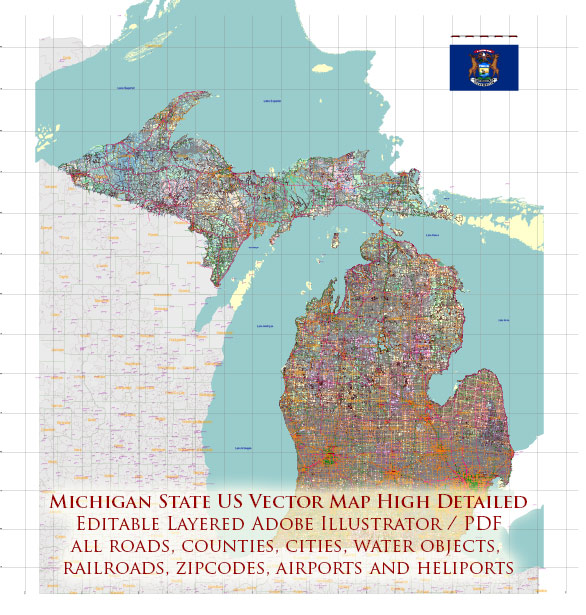Michigan, located in the Great Lakes region of the United States, has a rich history of urban development that reflects the broader trends in American history. The state’s urban landscape has been shaped by various factors, including industrialization, immigration, and demographic shifts. Here is an overview of the history of urban development in Michigan:
- Early Settlement and Fur Trade (17th-18th centuries):
- Michigan’s urban history begins with the Native American communities that inhabited the region for centuries.
- The French were the first Europeans to explore and settle in Michigan, establishing fur trading posts and missions.
- 19th Century Industrialization:
- The 19th century saw rapid industrialization in Michigan, particularly in cities like Detroit, Grand Rapids, and Flint.
- Detroit, with its strategic location along the Detroit River and proximity to natural resources, became a major industrial hub.
- The lumber industry played a significant role in the growth of cities like Grand Rapids.
- Auto Industry Boom (Early 20th Century):
- Michigan became synonymous with the automobile industry, especially after Henry Ford established the Ford Motor Company in Detroit.
- The growth of the auto industry led to the expansion of cities and the development of a manufacturing infrastructure.
- Detroit, in particular, experienced a population boom as people migrated from rural areas in search of employment.
- Urbanization and Immigration:
- The late 19th and early 20th centuries saw a wave of immigration to Michigan, contributing to the cultural and ethnic diversity of its urban areas.
- Cities like Detroit became melting pots of different ethnic communities, with neighborhoods reflecting the cultural backgrounds of their residents.
- Post-World War II Changes:
- After World War II, there was a significant shift in the economic landscape, and manufacturing continued to dominate, especially in the automotive sector.
- Suburbanization became a notable trend, with people moving away from urban centers to newly developed suburbs.
- The construction of the interstate highway system further facilitated suburban growth.
- Deindustrialization and Economic Challenges:
- In the latter half of the 20th century, Michigan faced economic challenges as deindustrialization took hold.
- The decline of the auto industry and the outsourcing of manufacturing jobs led to economic hardships in many urban areas.
- Revitalization Efforts:
- In recent decades, there have been efforts to revitalize urban areas, particularly in Detroit.
- Initiatives such as downtown redevelopment, cultural projects, and investments in technology have aimed to diversify the economy and attract new residents.
- Contemporary Urban Challenges:
- Michigan’s urban areas continue to face challenges such as population decline, vacant properties, and infrastructural issues.
- However, there are ongoing efforts to address these challenges through community development, entrepreneurship, and sustainable urban planning.
The history of urban development in Michigan reflects the broader patterns of American industrialization, migration, and economic transformation. The state’s cities have undergone significant changes over the centuries, adapting to economic shifts and societal changes.


 Author: Kirill Shrayber, Ph.D.
Author: Kirill Shrayber, Ph.D.